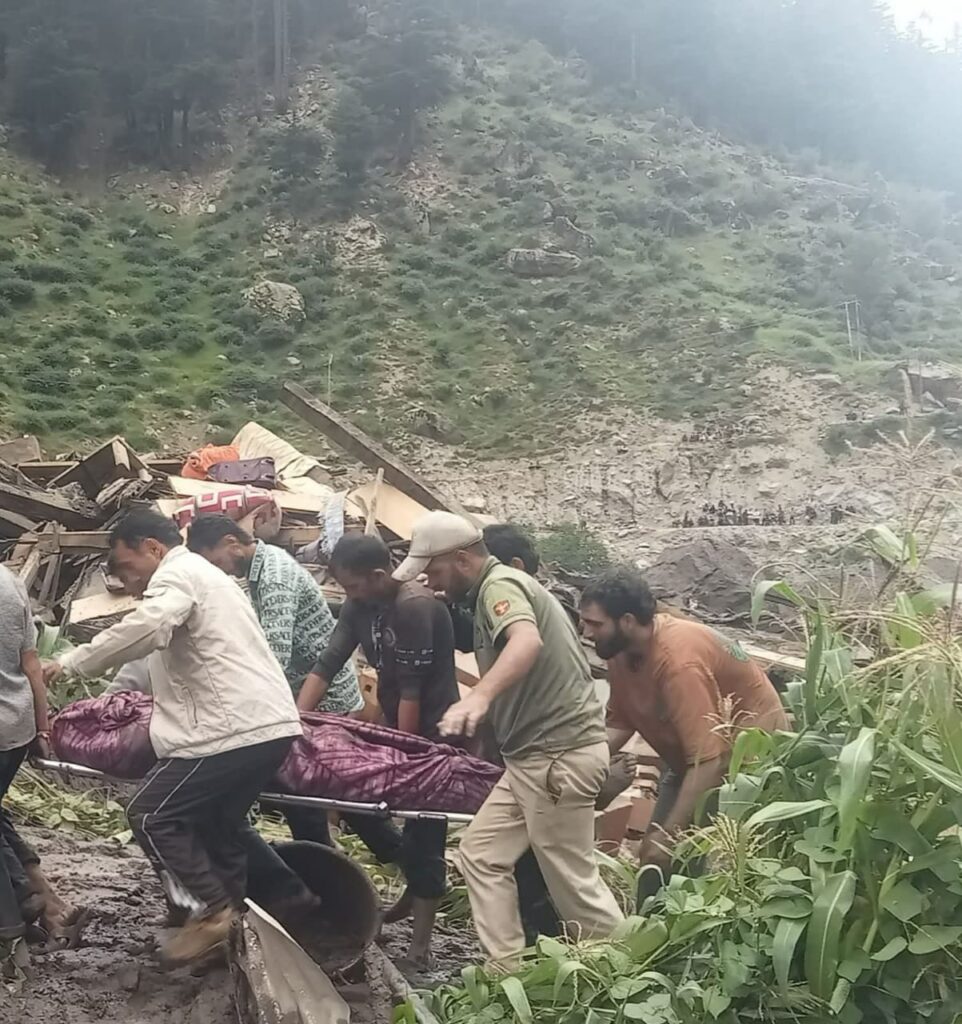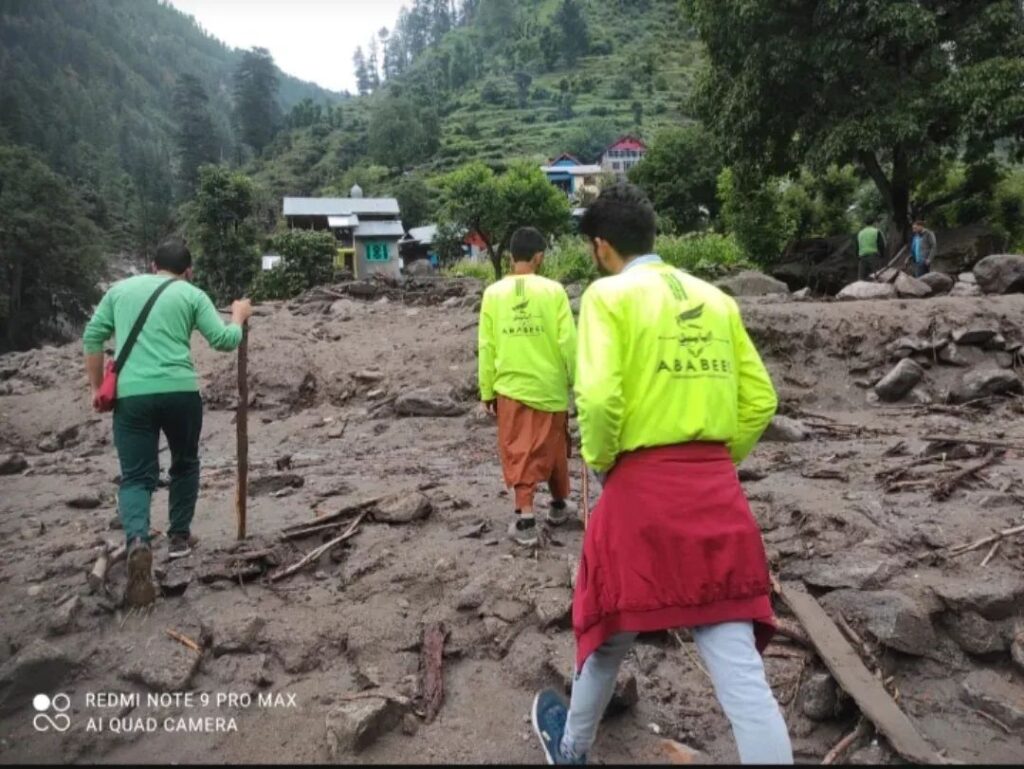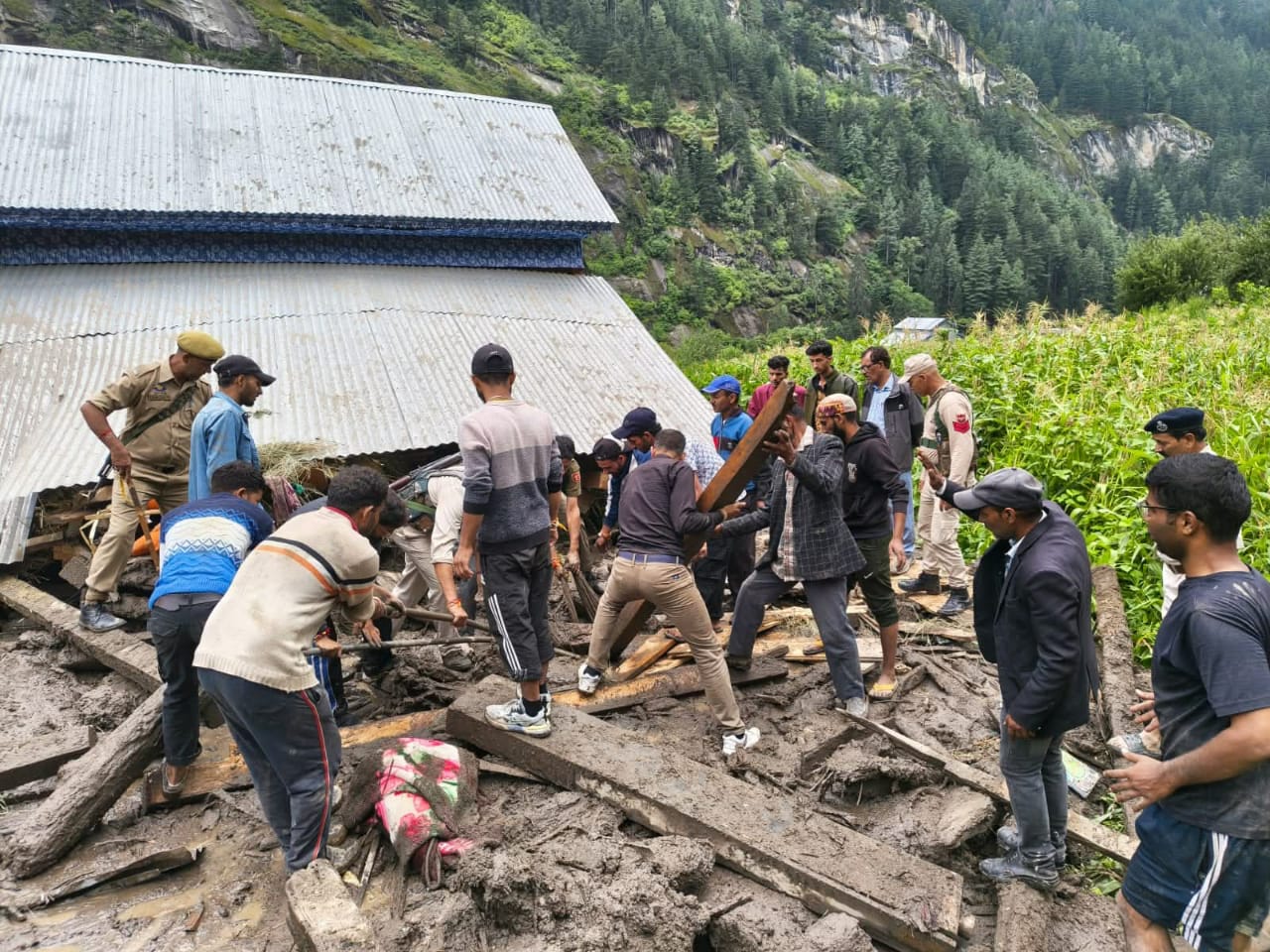Pilgrims Among Victims as Climate Chaos Meets Systemic Gaps in Preparedness.
Kishtwar, J&K, Thrusday, 14th August: In one of the deadliest natural disasters to hit Jammu & Kashmir in recent years, at least 58 people, including two CISF jawans, have lost their lives after a massive cloudburst struck Chositi—the last motorable village on the route to the revered Machail Mata shrine—on Thursday.

The fury of nature came without warning. Torrential rains triggered a violent wall of water and debris, sweeping through the narrow valley, smashing homes, and engulfing hundreds of Machail Mata Yatra pilgrims. More than 150 have been injured—50 of them critically—and more than 150 remain missing as rescue teams battle treacherous terrain, landslides, and swollen mountain streams.
Medical facilities are stretched to breaking point. District Hospital Kishtwar is overflowing with the critically injured, while the Sub-District Hospital in Paddar struggles to handle dozens of trauma cases. Helicopters have been pressed into service to evacuate the severely injured to Jammu.
The pilgrimage has been suspended indefinitely. NDRF, SDRF, Army units, and local volunteers Ababeel are engaged in round-the-clock rescue efforts, often risking their lives in unstable conditions.

In the wake of the tragedy, Prime Minister Narendra Modi and J&K Lieutenant Governor Manoj Sinha expressed deep grief, offering condolences to the bereaved families and assuring all possible assistance. Former CM Omar Abdullah has announced the cancellation of the “At Home” tea party scheduled for Friday evening, and said the cultural programmes planned for Independence Day morning will be dropped as a mark of respect for the victims.
While rescue operations continue, questions are being raised about the system’s preparedness. Despite repeated warnings from environmentalists about the region’s vulnerability to flash floods and cloudbursts, early warning systems remain inadequate, and pilgrim safety protocols are often reactive rather than preventive. In high-risk Himalayan zones, unplanned infrastructure, deforestation, and unchecked construction along fragile slopes have further magnified the impact of extreme weather events.
Climate experts caution that such disasters are not isolated freak events but part of an accelerating pattern. Rising global temperatures are intensifying cloudbursts, making rainfall more erratic and more destructive. Vulnerable mountain communities, particularly in the Himalayan belt, are now at the frontline of the climate crisis—bearing the brunt of a warming planet and gaps in governance.
The devastation in Chositi is a stark reminder that disaster management cannot begin after the disaster. Building resilience—through early warning systems, sustainable infrastructure, strict enforcement of environmental laws, and climate-aware planning—is no longer optional; it is a moral imperative to safeguard lives in an era where nature’s fury is only growing stronger.
Report: Mansoor Qadir, ITN.



